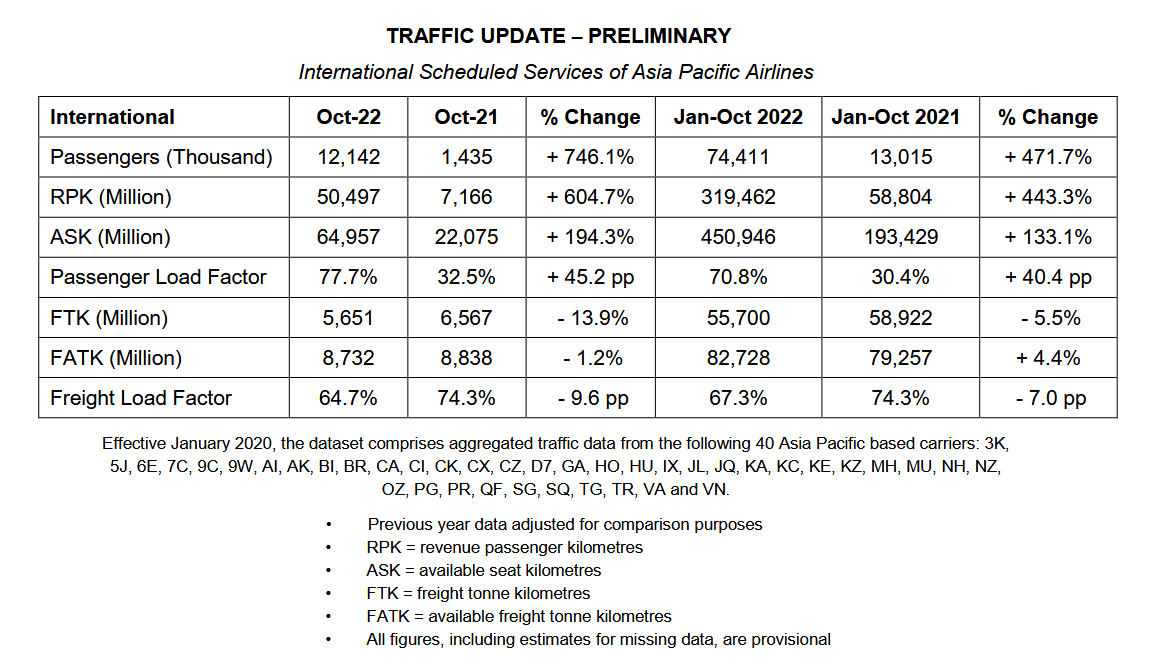KUALA LUMPUR, 2 December 2022: Preliminary traffic figures released Wednesday by the Association of Asia Pacific Airlines (AAPA) showed that international air travel continued to grow strongly in October 2022, driven by pent-up demand, even as global economic activity eased noticeably.
Asia Pacific airlines carried 12.1 million international passengers in October, an eight-fold increase compared to the 1.4 million in the same month last year. Overall, passenger traffic volumes reached 38.6% of pre-pandemic levels. As measured in revenue passenger kilometres (RPK), demand surged by 604.7% year-on-year, outpacing the 194.3% expansion in available seat capacity. As a result, the average international passenger load factor doubled to 77.7% for the month.

Meanwhile, international air cargo demand declined markedly, by 13.9% year-on-year in freight tonne kilometres (FTK) terms, amid a downturn in export markets for intermediate goods. Offered freight capacity fell marginally, by 1.2% year-on-year, leading to a 9.6 percentage point fall in the average international freight load factor to 64.7%.
Commenting on the results, Subhas Menon, AAPA Director General said: “The lifting of travel restrictions in North East Asia in October 2022 was welcomed by the travelling public and the region’s airlines which saw substantial improvements to load factors. Overall, during the first ten months of the year, the combined 74 million international passengers carried by Asian airlines represented a 472% increase compared to the previous corresponding period.”
“By contrast, air cargo markets moderated even more due to multiple headwinds. Declining business confidence, against rising risks to the global economy, led to a slowing in orders for manufactured goods, driving a 5.5% year-on-year decline in air cargo demand for the first 10 months of the year.”
Menon concluded: “Based on forward booking trends, the outlook for travel remains positive as we approach the final months of the year. While the recovery in air travel is a welcome relief for the industry, the region’s airlines are facing a challenging operating environment as a result of high fuel prices, weak local currencies and manpower shortages. Nevertheless, AAPA remains committed to ensuring the safe, seamless and sustainable restoration of air travel.”






